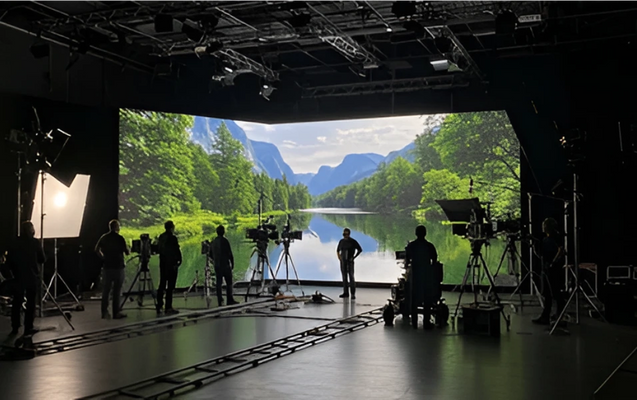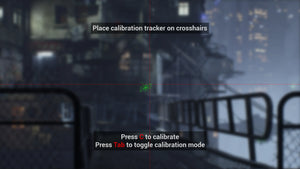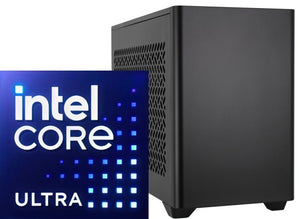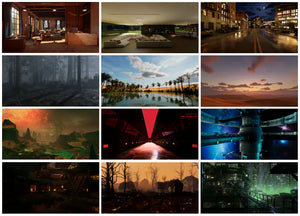SFX vs VFX – What’s the Real Difference in Film and Media?

When you sit down to watch a blockbuster filled with explosions, creatures, or futuristic landscapes, you’re really experiencing a combination of two kinds of movie magic: SFX and VFX. These terms are often used interchangeably, but they don’t actually mean the same thing. If you’ve ever asked yourself what is SFX vs VFX? or wondered are SFX and VFX the same?, you’re not alone. Both are crucial tools in modern filmmaking, yet they serve very different purposes. Understanding these differences helps explain how movies, commercials, and even games achieve their most breathtaking moments.
In this guide, we’ll explore the role of SFX, VFX, and CGI, clear up common misconceptions, and answer the big question: SFX vs VFX – which is better?
What is SFX in Film?
SFX, short for Special Effects, refers to practical effects that are physically created on set. These are the kinds of effects that actors can actually see and react to while filming. Think of a car bursting into flames during a chase scene, fake rain pouring down during a romantic moment, or a creature brought to life with prosthetic makeup. These aren’t added later with computers; they’re physically happening in front of the camera.
Special effects can range from pyrotechnics and controlled explosions to animatronics and makeup artistry. Classic horror movies relied heavily on SFX to transform actors into monsters, while war films used squibs and fake blood to make battle sequences look authentic. Even something as simple as a gust of wind or falling snow on screen can be considered SFX if it’s produced live on set with machines. The main appeal of SFX lies in its realism. Because these effects are happening in real time, actors respond naturally, and the audience senses that authenticity.
What is VFX in Film?
VFX, or Visual Effects, on the other hand, refers to imagery that is created or manipulated in post-production using digital tools. Unlike SFX, these effects don’t exist physically during the shoot. Instead, they are designed with advanced software and added later to enhance or completely transform what the camera captured.
Visual effects can be as subtle as digitally erasing a microphone that accidentally dipped into the shot, or as dramatic as creating an entire alien planet. A flying superhero soaring across the sky, a digitally de-aged actor, or a futuristic cityscape—all of these are examples of VFX.
The strength of VFX lies in its limitless possibilities. It allows filmmakers to create what cannot be built physically, whether for safety, budget, or creative reasons. While you might not be able to blow up a real city for a movie, you can certainly do it with VFX.

Are SFX and VFX the Same?
It’s easy to see why people confuse these two. Both SFX and VFX are used to make the impossible look believable, and both aim to immerse audiences in a story. However, they are not the same. The difference comes down to when and how the effect is created.
SFX takes place live, on the film set, using physical methods. VFX, in contrast, is crafted later in the digital realm, after shooting has wrapped. They often work hand in hand. For instance, in a battle scene, the blood squib that bursts on an actor’s costume is SFX, while the endless digital army marching in the background is VFX. One is practical, the other digital, but both combine to create a seamless scene.
What is CGI vs VFX vs SFX?
The introduction of CGI adds another layer of confusion. CGI, which stands for Computer-Generated Imagery, is often mistaken as being separate from VFX. The truth is, CGI is actually a subset of VFX. In other words, not all VFX is CGI, but all CGI is part of VFX.
If a director digitally removes wires from a stunt scene, that is VFX but not necessarily CGI. However, when a 3D artist creates a dragon from scratch on a computer, that’s CGI, which falls under the umbrella of VFX. Meanwhile, if that dragon’s fire breath involves a real flamethrower on set, that would be SFX.
So the relationship looks like this: SFX is practical and real, VFX is digital, and CGI is a specific type of VFX that relies on 3D computer graphics.
What is the Difference Between VFX and Visual Effects?
This one is actually simple. There is no difference at all. VFX is simply the abbreviation of Visual Effects. When you see the two terms used separately, they’re referring to the exact same process.
SFX vs VFX – Which is Better?
The big question most people ask is whether one is better than the other. The truth is, neither can truly replace the other. SFX and VFX have unique strengths, and the most memorable films are usually the ones that combine both approaches.
Special effects bring tangibility and realism. When a real explosion goes off on set, the actors react to it with genuine surprise, and that authenticity translates onto the screen. Audiences can often sense when something physical is happening in front of the camera, and that realism can make a scene feel more immersive.
Visual effects, however, open the door to endless creativity. You can place characters in worlds that don’t exist, create creatures no one has ever seen, or depict destruction on a massive scale without endangering anyone. For large productions, VFX can also be more cost-effective than building massive sets or staging dangerous stunts.
In practice, most directors find that a balance between the two works best. Christopher Nolan, for example, is known for using real stunts and explosions wherever possible, but still relies on VFX to enhance what the camera captures. The result is a layered approach where SFX grounds the film in reality while VFX expands its scale and imagination.
Famous Examples of SFX and VFX Working Together
To see this balance in action, consider Jurassic Park (1993). The film used massive animatronic dinosaurs on set so actors could interact with something real, but it also pioneered CGI to create more complex dinosaur movements. The combination made the prehistoric creatures unforgettable.
In Inception (2010), Nolan built a rotating hallway to film a gravity-defying fight scene. That’s SFX. But when entire cities folded in on themselves, that was VFX. Together, they created a surreal dream world that still felt believable.
Even in modern superhero films like Avengers: Endgame, the two techniques coexist. Actors wear real costumes and practical makeup, but the epic battles with alien armies are built with VFX. Without either approach, the final film would feel incomplete.

Why Knowing SFX vs VFX Matters Beyond Movies
Understanding the difference isn’t just useful for film buffs. Businesses in advertising, corporate media, gaming, and even virtual reality increasingly rely on both SFX and VFX. A commercial might use SFX to stage a simple fire effect on set, but then turn to VFX to expand that into a more dramatic digital sequence. Game developers use CGI to create immersive environments, while training simulations for industries like aviation or healthcare lean on VFX to replicate real-world scenarios.
For companies, knowing when to use SFX, VFX, or a mix of both can save money, improve safety, and deliver more powerful creative results.
How SFX and VFX Shape Modern Media
Today, the line between reality and imagination in media has never been blurrier. Whether you’re watching a streaming series, scrolling past an ad on social media, or stepping into a virtual reality demo, you are likely encountering a mix of SFX and VFX.
In filmmaking, practical effects still anchor performances in reality, while visual effects extend the story beyond what’s physically possible. In advertising, brands often use smaller SFX like staged smoke, water, or props, then expand those scenes with VFX to craft visually stunning campaigns. Even in live events, concert stages and theater productions rely on SFX for immediate impact, while VFX or CGI projections enhance the atmosphere.
The gaming industry and VR platforms also depend heavily on visual effects. Players expect lifelike experiences that merge the physical and digital, which is only possible with advanced VFX and CGI techniques. Meanwhile, SFX plays a role in motion-capture stages and practical setups where actors interact with props or physical rigs.
This blending of practical and digital isn’t just artistic—it’s strategic. Businesses know that audiences today are savvy, and they can often tell when something looks “too fake.” By integrating SFX and VFX thoughtfully, creators build experiences that are both believable and awe-inspiring.
The Cost Factor – SFX vs VFX
One of the biggest questions for production teams is always cost. Which is more expensive: SFX or VFX? The answer depends heavily on the scope of the project.
SFX can sometimes be more affordable for smaller effects. For example, creating a physical rain machine might cost less than digitally simulating rain in post-production. But for large-scale destruction, VFX often becomes cheaper and safer than building massive sets and blowing them up.
Let’s break it down with a few scenarios:
-
When SFX is cost-effective:
Small pyrotechnics, practical makeup, on-set atmospheric effects like fog or wind, or simple mechanical props. -
When VFX is cost-effective:
Complex world-building (cities, space, fantasy realms), large-scale destruction scenes, creatures and monsters, or futuristic visuals that would be impossible to shoot practically.
Ultimately, budgets today often allocate for both. A smart production strategy starts with practical effects where realism matters most, then leans on VFX to expand scale, safety, and creativity.
How ARwall Blends the Power of SFX and VFX
This is where ARwall enters the picture. ARwall specializes in extended reality (XR), augmented reality (AR), and virtual production technologies that give filmmakers, advertisers, and creators an alternative to heavy reliance on traditional SFX or costly post-production VFX.
With ARwall’s award-winning ARFX software and virtual production tools, you don’t always need to choose between SFX and VFX. Instead, you can use real-time in-camera effects, where digital backgrounds, lighting, and environments are projected or displayed behind the actors during filming. This bridges the gap:
-
It offers the realism of SFX because actors can perform in front of immersive, dynamic backgrounds rather than a green screen.
-
It delivers the flexibility of VFX since those backgrounds are digital and can be swapped or modified instantly.
For example, instead of building a massive set or waiting months for post-production rendering, directors using ARwall’s tools can change an entire environment with just a few clicks. Want to turn a sunny street into a rainy night? With ARFX, that transformation can happen live on set.
This approach also reduces costs by cutting down on the need for heavy SFX rigs and lengthy VFX timelines. It’s a future-focused blend that combines the strengths of both techniques while solving their weaknesses.
Real-World Applications with ARwall
ARwall’s solutions are already being applied across industries where SFX and VFX once dominated separately.
-
Film and TV Production: Directors use ARFX to shoot scenes that would normally require a green screen or CGI-heavy post-production. The actors perform against digital backdrops that look real to the eye, creating authentic interactions.
-
Advertising and Marketing: Brands want fast, visually striking campaigns without the huge overhead of either building sets (SFX) or spending weeks on VFX. ARwall offers the middle ground, allowing agencies to design digital environments that look cinematic but are delivered quickly.
-
Corporate Training and Simulation: Extended reality powered by ARwall combines practical and digital worlds, enabling industries like healthcare or aviation to train professionals in lifelike environments.
-
Live Events and Virtual Production: From concerts to product launches, ARFX technology creates immersive stages where digital and physical elements merge seamlessly.
In each case, ARwall is proving that the choice doesn’t always have to be “SFX vs VFX.” With modern tools, you can have the best of both worlds in real time.

FAQs on SFX vs VFX vs CGI
What is SFX vs VFX?
SFX refers to practical, real-world effects created on set, while VFX refers to digital effects added in post-production.
Are SFX and VFX the same?
No, they are different. SFX is physical, VFX is digital. They often work together to create seamless movie magic.
What is CGI vs VFX vs SFX?
CGI is a type of VFX that uses computer-generated 3D imagery. VFX is the broader category of digital effects, and SFX refers to physical effects on set.
What is SFX in film?
SFX stands for Special Effects, including practical methods like pyrotechnics, prosthetic makeup, animatronics, and mechanical rigs.
What is the difference between VFX and visual effects?
There’s no difference. VFX is simply the abbreviation for Visual Effects.
SFX vs VFX – which is better?
Neither is universally better. SFX offers realism, while VFX offers flexibility and scale. Most productions combine both.
Why Choose ARwall for Your Next Project?
If you’re asking yourself SFX vs VFX – which is better?, the real answer might be: neither on their own. The future belongs to approaches that combine the strengths of both. That’s exactly what ARwall provides with its XR and AR solutions.
By using ARFX, filmmakers and creators reduce their reliance on massive physical builds while avoiding the pitfalls of excessive post-production. Productions become faster, safer, and often more affordable—without compromising on creativity.
The Future of Effects is Hybrid
The debate over SFX vs VFX isn’t about which one wins. Both are vital, and both continue to evolve. What’s changing now is how companies like ARwall are bridging the gap, allowing productions to capture stunning, cinematic effects in real time without waiting months for post-production or risking costly on-set setups.
If you’re ready to explore how ARwall’s technologies can revolutionize your project—whether you’re in film, advertising, corporate media, or live events—this is the time to make the move. Contact us at ARwall today to learn more about how our award-winning software and services can bring your vision to life.




